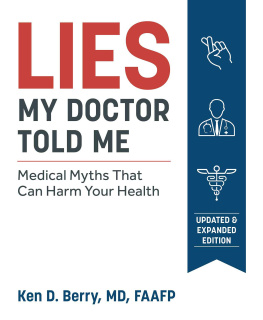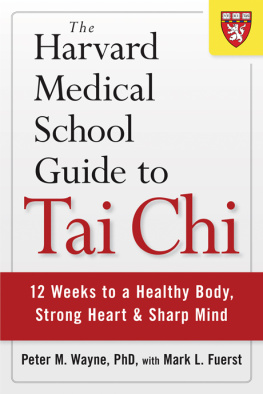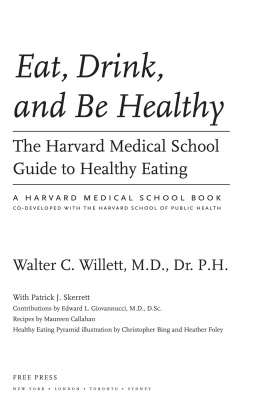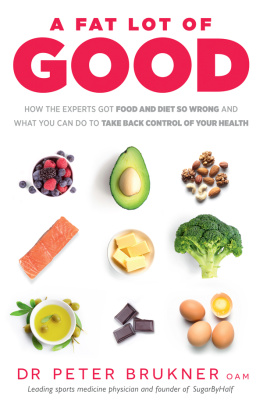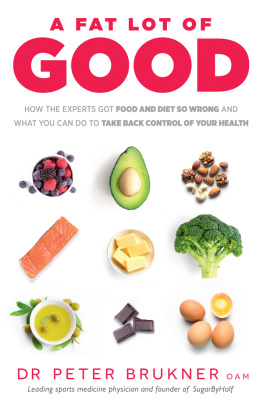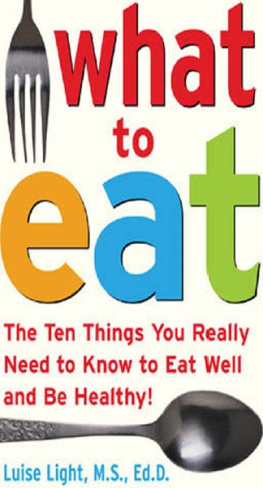T HE CONCEPTS IN THIS BOOK owe much to the work and ideas of many predecessors, present colleagues, postdoctoral fellows, and doctoral students. In particular, I am grateful for the encouragement, support, and thoughts of my colleagues Ed Giovannucci, Meir Stampfer, Graham Colditz, Bernard Rosner, Laura Sampson, JoAnn Manson, Frank Sacks, David Hunter, Charles Hennekens, Sue Hankinson, Eric Rimm, Frank Hu, and Alberto Aschiero of the Channing Laboratory and Harvard School of Public Health. Frank Speizer provided strong support over many years for the study of diet and disease within the Nurses Health Study.
The vast majority of the research described in this book, by our own group and by others, would not have been possible without the funding of research grants through the National Institutes of Health. My colleagues and I are most appreciative of the strong public support for health-related research in the United States, and hopefully the information contained in this book will be deemed worthy of this investment.
Many helpful comments were received from Drs. Meir Stampfer, Susan Roberts, Frank Sacks, Eric Rimm, Peter Glausser, and Mollie Katzen, who reviewed all or specific chapters of this book. Dr. Tony Komaroff and Edward Coburn of Harvard Medical School provided important support and encouragement in the development of this update, and Liz Lenart and Debbie Flynn assisted in many aspects of the production. I also want to thank Simon & Schuster and Bill Rosen in particular for their vision of creating a series of high-quality books about health from Harvard Medical School.
At home my wife, Gail, assisted in many experiments in new ways of eating. Our sons Amani, who managed to trade the apples in his lunch for Twinkies at day care, and Kamali, who showed me that a vegetarian diet could mean Coca-Cola, ice cream, and pizza, helped me stay in touch with reality.
Building a Better Pyramid
Y OU EAT TO LIVE.
Its a simple, obvious truth. You need food for the basics of everyday lifeto pump blood, move muscles, think thoughts. But food can also help you live well and live longer. By making the right choices, you can avoid some of the things we think of as the inevitable penalties of getting older. A healthy diet teamed with regular exercise and not smoking can eliminate 80 percent of heart disease and the majority of cancer cases. Making poor choiceseating too much of the wrong kinds of food and too little of the right kinds, or too much food altogetherincreases your chances of developing cancer, heart disease, and diabetes. It contributes to digestive disorders and aging-related loss of vision. It may influence Alzheimers disease. An unhealthy diet during pregnancy can cause some birth defects, and may even influence a babys health into adulthood and old age.
When it comes to diet, knowing whats good and whats bad isnt easy. The food industry spends billions of dollars a year to influence your choices. Diet gurus promote the latest fads, while the media serves up near daily helpings of often flip-flopping nutrition news. Supermarkets and fast-food restaurants offer advice, as do cereal boxes and a sea of Internet sites.
Where can you turn as a source of reliable information on healthy eating? The U.S. Department of Agriculture (USDA) touts its new food pyramid and food guidance system as aids to help you make healthier food choices. In reality, these tools help farmers and food companies more than they will help you.
TURNING TO THE USDA PYRAMID IS A MISTAKE
Through the Food Guide Pyramid, now called MyPyramid (see ), the USDA presents what it wants you to think of as rock-solid nutrition information that rises above the jungle of misinformation and contradictory claims. What it really offers is wishy-washy, scientifically unfounded advice on an absolutely vital topicwhat to eat.
The original Food Guide Pyramid, unveiled in 1992, was built on shaky scientific ground. It included six food groups, each labeled with recommended daily servings. At the foundation sat an admonition to load up on highly refined starches, while the top was crowned with a Use Sparingly group that included fats, oils, and sweets. In between were fruits, vegetables, protein, and dairy.
USDAs new MyPyramid

FIG. 1 MyPyramid. In 2005, the USDA unveiled its catchy but information-free replacement for the familiar Food Guide Pyramid.
Over the next thirteen years, research from around the globe eroded the Food Guide Pyramid at all levels. Results from scores of large and small studies chipped away at its foundation (carbohydrates), middle (meat and milk), and tip (fats). The USDA never renovated the Pyramid, but left it to crumble under the weight of new scientific evidence.
Taking a cue from television reality shows, the agriculture department gave the Pyramid an extreme makeover in April 2005. It tipped the Pyramid on its side and painted it with a rainbow of brightly colored bands running vertically from the tip to the base. A jaunty stick figure runs up stairs chiseled into the left side. Thats itno labels, no text, not even the equivalent of a nutritional Rosetta stone to help you decipher what it means. For that you need a computer and a connection to the Internet.
The good news about the makeover is that the USDA finally took a wrecking ball to its dangerously outmoded Pyramid. The bad news is that its replacement doesnt offer any real information to help you make healthy choices, and continues to recommend foods that arent essential to good health and that may even be detrimental in the quantities included in MyPyramid.
At best, MyPyramid stands as a missed opportunity to improve the health of millions of people. At worst, the lack of information and downright misinformation it conveys contribute to overweight, poor health, and unnecessary early deaths.
REBUILDING THE PYRAMID
I wrote this book to show you where the USDA pyramidsold and newwent wrong and why they are wrong. In their place, I offer a better guide to healthful eating based on the best scientific evidence available today. It fixes the fundamental flaws of the USDAs advice and helps you make better choices about what you eat. I also want to give you the latest information on new discoveries that should have profound effects on how and what we eat.
The New Healthy Eating Pyramid (see ) gathers much of this information into a simple, easy-to-use, and familiar icon. It encourages you to choose most of the foods you eat from the lower sectionswhole grains, healthy oils, fruits, vegetables, nuts, and legumes. You dont have to weigh your food or tally up fat grams. There are no complicated food exchange tables to follow. You neednt eat odd combinations of foods or religiously avoid particular foods (except those containing trans fats).
The New Healthy Eating Pyramid

FIG. 2 Healthy Eating Pyramid. This pyramid, based on solid science, offers better guidance for healthy eating than the advice from the USDA.
The New Healthy Eating Pyramid isnt a diet designed to help you shed pounds. Instead, it aims to nudge you toward eating mostly familiar foods that have been shown to improve health and reduce the risk of chronic disease. The eating strategies embodied in the pyramid and explained in this book involve simple changes you can make one at a time. Because they will make your meals and snacks tastier, and help keep hunger at bay, these changes can also help you lose weight or keep it under control. Best of all, it is a strategy you can stick with for years.
Next page


